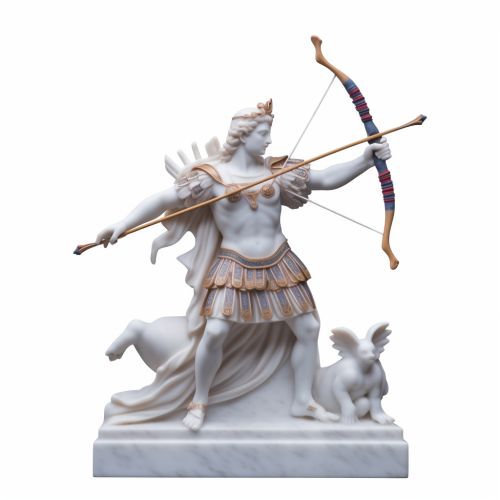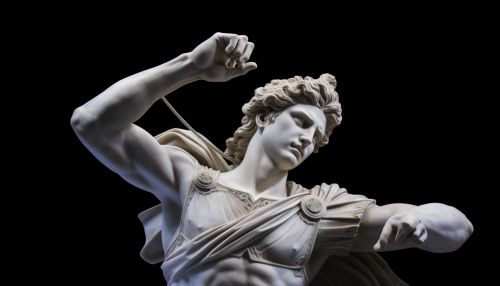Apollo Belvedere
Overview
The Apollo Belvedere or Apollo of the Belvedere—also called the Pythian Apollo—is a celebrated marble sculpture from Classical Antiquity. The Apollo is now thought to be a Roman copy of Hadrianic date (ca. 120–140) of a lost bronze original made between 350 and 325 BC by the Greek sculptor Leochares. It was rediscovered in central Italy in the late 15th century, during the Renaissance.


Description
The Apollo Belvedere stands in a graceful contrapposto stance, with his right arm extended, having just released an arrow from the bow held in his left hand. His quiver is suspended across his left shoulder. He is entirely nude except for his sandals and a robe (chlamys) clasped at his right shoulder, turned up on his left arm, and thrown back.
History
The statue was rediscovered with the Laocoön group on the property of Giuliano della Rovere, the future Pope Julius II, in the vineyard near Santa Maria in Via Lata. It was immediately purchased by the Vatican and placed on display in the Cortile del Belvedere, where it was celebrated as the "Belvedere Apollo" and drew a stream of artists to Rome to study it.
Influence and legacy
The Apollo Belvedere became one of the world's most celebrated art works, admired for the perfection of its anatomy and the truth of its lifelike presence, qualities that subsequent artists aspired to imitate. The sculpture's influence can be seen in numerous works of the Renaissance and Baroque periods, and it continues to be regarded as a prime example of the Classical aesthetic in sculpture.
